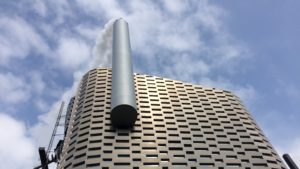New standards of excellence for wte sector

These new standards of excellence confirm Waste-to-Energy as the most sustainable waste management option for non-recyclable waste, as opposed to landfilling.
“We believe in the important role of these requirements in minimising the environmental and human health impacts arising from industrial emissions in the EU”, ESWET President Edmund Fleck said. “We stand ready to assist stakeholders in the smooth implementation of the WI BAT Conclusions”, he added.
Currently, the emissions produced by WtE plants are so low that even the most sophisticated technologies can hardly measure them. The WtE sector has made enormous progress in the past decades and it is proud to be considered today one of the cleanest industry in Europe. For this reason, it believes that its example could encourage other industrial sectors to follow its path and to further reduce their emissions.
In order to help stakeholders and players to understand the WI BREF in its entirety and to identify the points needing clarification for implementation with competent authorities, ESWET has prepared together with CEWEP and FEAD an Explanatory and Guidance document (E&G-d) which addresses comprehensively the identified topics, such as uncertainty of measurements, and proposes practical solutions.
The BAT Conclusions under Directive 2010/75/EU on industrial emissions (the ‘IED’) provide national authorities with the technical basis for setting permit conditions for industrial installations. Assuring that these installations are operated according to what is considered BAT, thus reaching the best available protection of health and environment.
There is a 4-year period for Member States, starting on 03 December 2019, to implement the BAT Conclusions for existing WtE installations, i.e. permitted before the publication of the BAT conclusions. New installations, i.e. first permitted after the publication of the BAT Conclusions, will need to comply immediately with the new requirements.
The WI BAT Conclusions are a key legally-binding element of a broader document, the WI BAT REFerence (BREF) document.